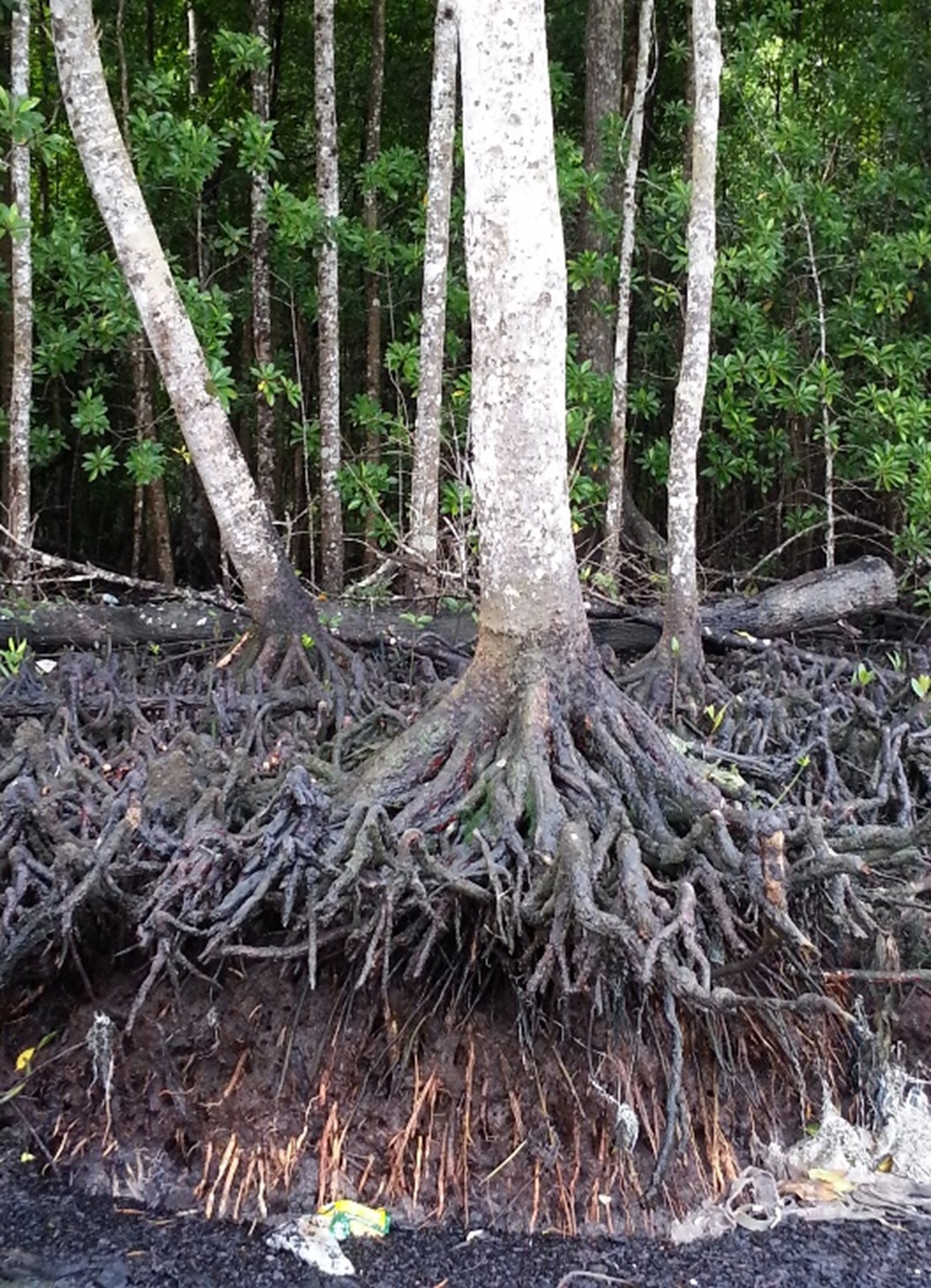
Is carbon blue in colour? The ‘carbon rainbow’ is an illustration of carbon emission and sequestration defined by scientists for the communication of carbon cycle and its impact on climate change. Black, grey, brown and red carbons are sources that release greenhouse gases (e.g. carbon dioxide, methane) into the atmosphere, resulting in global warming and climate change. Purple, green, teal and blue carbons are sinks that store carbon in other molecular forms that do not cause greenhouse effect to the planet. Purple carbon are carbon captured with technologies, green carbon refers to the carbon stored as biomass by terrestrial plants, teal carbon means carbon stored in freshwater and non-tidal wetland environments and blue carbon deals with the carbon sequestered by marine plant and coastal ecosystems. Carbon sinks are important in climate change mitigation. As population grows and human beings consume more, burn more fossil fuels for transportation, greenhouse gas will accumulate in the atmosphere if not because of carbon sinks.
Blue carbon is an effective nature-based carbon sink. Three key ecosystems—mangroves, salt marshes and sea grasses—come under the umbrella of blue carbon. The stored carbon in coastal ecosystems is ten times higher than that in terrestrial ecosystems. For mangroves, a large portion of carbon is stored below ground in the form of sediments due to the low rate of decomposition in the water-logged, oxygen deprived environment. The complex and extensive root system of mangrove forests slow down coastal erosion and prevent flooding from storm surge. Further, these ecosystems actively support coastal and marine wildlife, which contribute to livelihood for the local communities.
However, protection of mangrove ecosystems often involves high costs. Stakeholders such as the government, landowners and logging concessionaires need to be compensated for stopping or reducing harvest of wood from mangrove forests. Moreover, since communities depend on it for livelihood, costs will also incur in reaching out to them to raise awareness about protecting these ecosystems and sustainably fulfilling their needs. Money, labour, time and knowledge are needed to retore mangrove ecosystems and to plant more mangrove trees.
Funds needed for mangrove conservation and restoration can be generated by selling carbon credits generated from these blue carbon ecosystems. Carbon credits are bought by corporations to offset their obligations under carbon pricing laws, or to boost their environmental, social, governance (ESG) rating and demonstrate that they contribute to the cause of climate change mitigation and other Sustainable Development Goals (SDGs).
There are approximately 80 mangrove species in the world; each species has its own biological peculiarity and each ecosystem live within its unique socioeconomic-political setting. Protection and restoration of mangrove can benefit from the involvement of local researchers, so that high quality blue carbon credits can be produced that benefits the investors, the local communities and the planet. With the establishment of the “Blue Carbon and Mangroves” Research Group in Universiti Putra Malaysia Kampus Bintulu led by Dr. Waseem Razzaq Khan and further help of Dr. Azlizam (UPM Holdings), we can look forward to scientifically sound and socially beneficial blue carbon efforts in Malaysia.
Waseem Razzaq Khan (PhD)
Department of Forestry Science, Faculty of Agricultural and Forestry Sciences, Universiti Putra Malaysia Bintulu Campus, 97008 Bintulu, Sarawak, Malaysia
Jane Koh (PhD)
Faculty of Forestry and Environment, Universiti Putra Malaysia, 43400 Serdang, Selangor, Malaysia
Tarikh Input: 15/06/2023 | Kemaskini: 15/06/2023 | lanz
PERKONGSIAN MEDIA
































